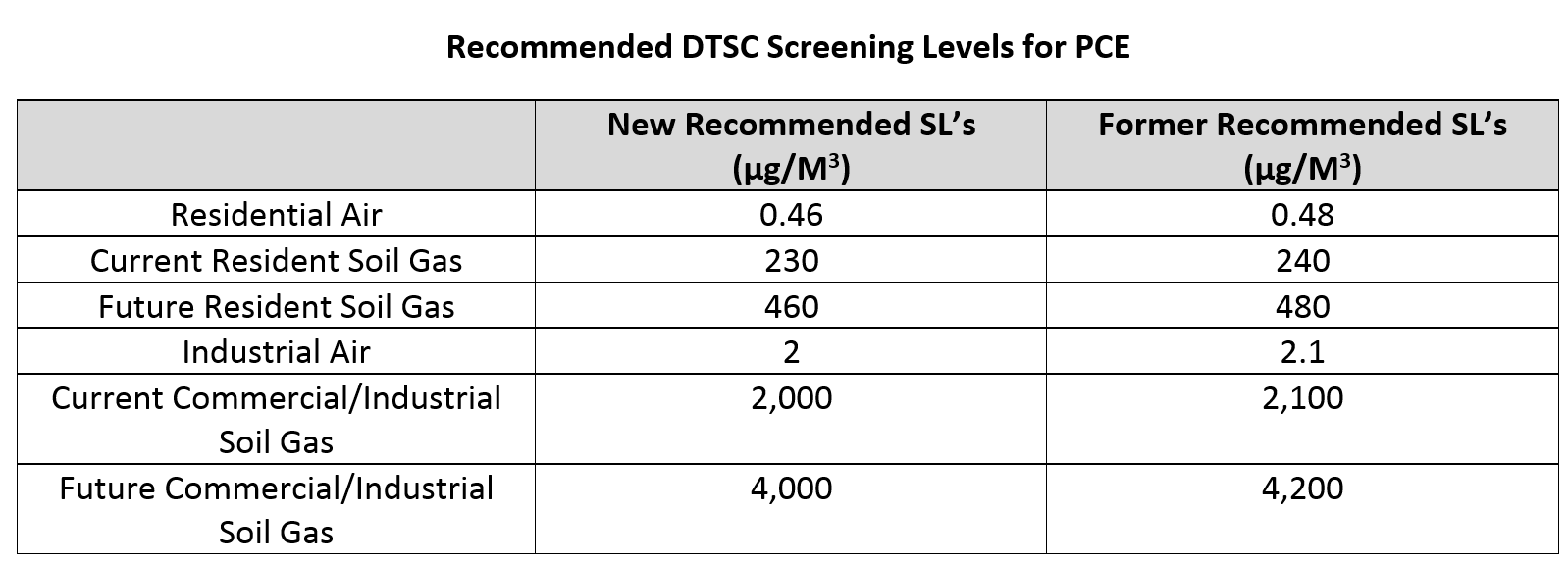California has issued revised screening levels (SL) for vapor-phase tetrachloroethylene (PCE). On September 8, 2016, California’s Office of Environmental Health Hazard Assessment (OEHHA) adopted an updated inhalation {Cancer} unit risk (IUR) factor for tetrachloroethylene (PCE). Updating the IUR also created revised recommended residential and commercial/industrial ambient air and soil gas screening levels (SL) for PCE. The Department of Toxic Substances Control’s (DTSC’s) revised PCE SLs are slightly more conservative than previous and remain below the United States Environmental Protection Agency (USEPA) SL for PCE. The USEPA’s SL are higher due to the use of a less conservative IUR (2.6E-07) than DTSC’s (6.1E-06) to derive its current SL; however, the USEPA acknowledges that the general IUR should not be used in all cases for evaluations and that “A number of uncertainties underlie the cancer unit risk for PCE…” Learn more by downloading the US EPA’s Chemical Assessment Summary of PCE here.
Below is a table of the former and revised DTSC SL’s.

On October 17, 2016, California’s DTSC Human and Ecological Risk Office (HERO) issued a response to inquiries associated with the PCE revised IUR and SL. Refer to this memorandum for further details associated with the updated IUR and SL’s. These SLs should be used in conjunction with the June 2016 Human Health Risk Assessment (HHRA) Note 3. DTSC indicates that a subsequent update to the HHRA Note 3 will be issued December 2016/January 2017, which will include the changes to the PCE toxicity criteria.
The exposure and risk factors for PCE and other chlorinated constituents, within the vapor phase, continue to be at the forefront of many regulatory agency mandated updates and often generate several topics of discussion. The overall trend continues to be conservative when evaluating the risk of these constituents. Ultimately, directing many site evaluations towards pre-emptive mitigation approaches, such as vapor intrusion are highly recommended to comply with increasing regulatory guidelines. Have further questions? Contact Land Science as our team of scientists and engineers are dedicated to vapor intrusion and mitigation related issues and developing solutions for sites across the US.

